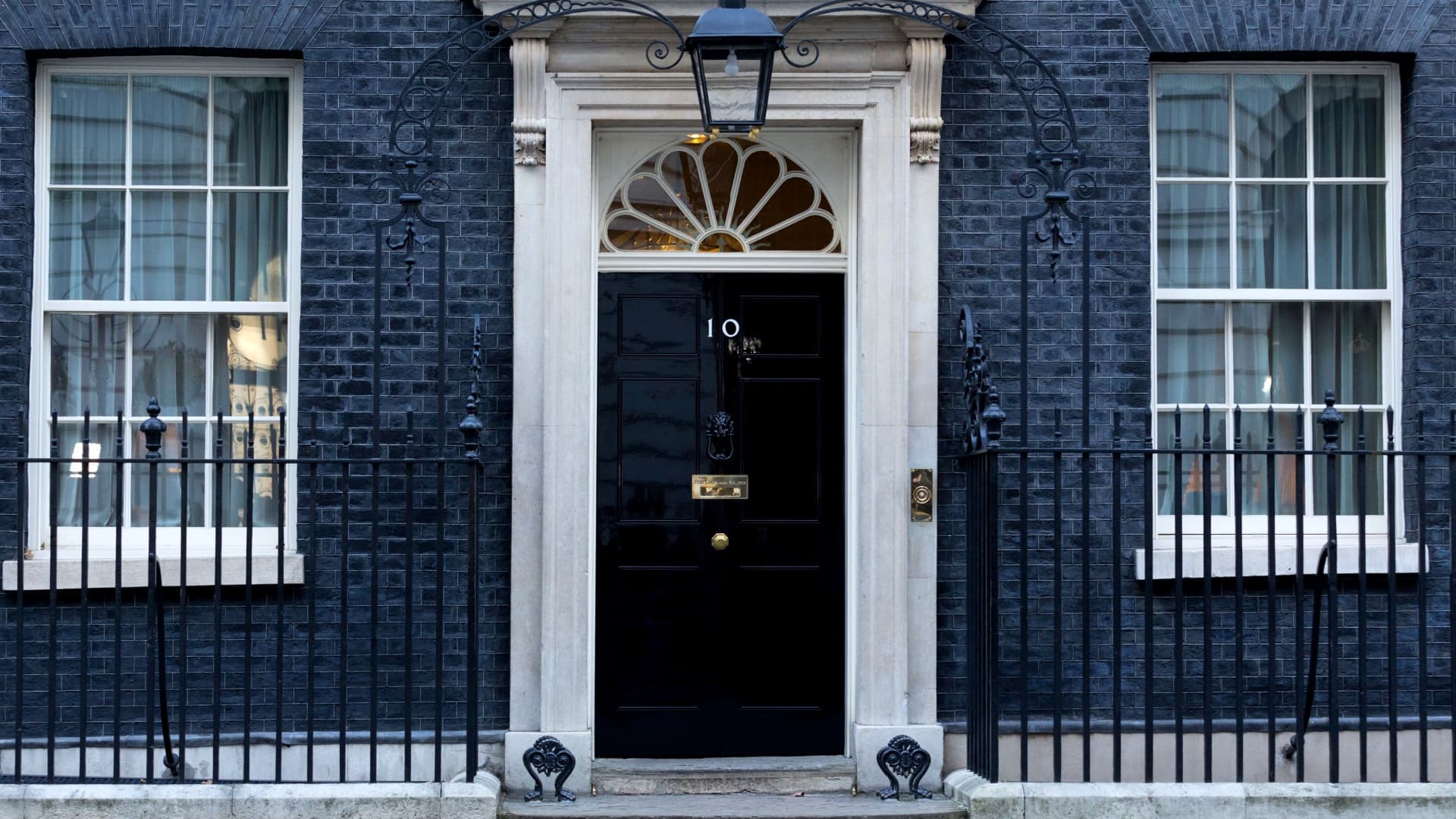
Holborn Assets Reviews : The UK Mortgage Market 2016
Posted on: 24th May 2016 in
Mortgage & Property
BREXIT, BTLs and FTBs – let’s jettison the jargon!
BREXIT, BTLs and FTBs – the 2016 UK mortgage market is full of drama and jargon this year, that’s for certain.
Maybe you are involved yourself?
Maybe you have a Buy-to-Let (BTL) property? Or are looking to get one?
Maybe you have First-Time Buyers (FTB) in the family, with your kids or grandkids taking on their very first mortgage?
Or maybe you have just noticed all the
hullabaloo in the press over a possible BREXIT in the EU Referendum of July 23rd sending house prices and mortgage rates haywire?
Here, Holborn Assets reviews the 2016 UK Mortgage Market and we ask one simple question: have UK expats got anything to worry about?
So what’s all the fuss about the 2016 UK mortgage market?
UK Mortgage approvals stood at almost
130,000 in January 2016, up from just over 100,000 a year before. The market is enjoying the seventh year of recovery in explosive style.
And the future is bright: IMLA reports that house prices are expected to rise by 3.4% in FY 2017, housing transactions by 4.0% and the total value of housing transaction by 7.5%.
“The turnaround in the mortgage market,” observes finance consultants
Parker Fitzgerald, “has been quite dramatic since the low point of 2010, when gross lending was only £135bn.”
‘Gross lending’ (meaning all lending activity) is expected to be up by almost 80% this year on that 2010 figure. What’s more, the UK’s Intermediary Mortgage Lenders Association (IMLA) “forecast that gross mortgage lending will rise further in 2016 to reach
£240bn, 9.1% above 2015’s total with a further increase to £263bn set for 2017.”
Net lending is up too – from lurking around the £10bn mark since the beginning of the 2010s, net lending will have risen to stand at £45bn in 2016 – and IMLA see it rise to £50bn in 2017. (‘Net lending’ describes how much mortgage lending there has been minus repayments. This figure is useful for showing how much outstanding debt there is in the market.)
What makes the UK mortgage market unpredictable this year is the impact of the EU Referendum and a possible BREXIT.
If BREXIT happens, short-term fluctuations in interest rates and house prices could well be dwarfed by more powerful long-term effects which we cannot predict right now.
What we
do know is that the ‘economic fundamentals’ for the 2016 mortgage market – what makes the sector tenable financially over the long-term – are sound.
Re-mortgaging driving growth of 2016 UK mortgage market
The new-found profile of the UK mortgage market in 2016 is mostly very good news for the First-Time Buyer at least; for the BTL landlord – less so, facing as he/she does a welter of new, and punitive, legislation.
But these are exciting times for both BTLs and FTBs – despite the twin threats of a possible crash in house prices and a possible BREXIT.
The good news is that growth in mortgage activity is
largely driven by re-mortgaging. (Re-mortgaging, for the uninitiated, simply means ending one mortgage deal and setting up another one; doing deals, in other words.)
As Parker Fitzgerald confirm of the 2016 UK mortgage market, “the rapid growth in re-mortgage lending has contributed nearly 40% of this increase in overall lending and shows no sign of slowing.”
Expanding re-mortgaging indicates intensifying market activity. Which means it is a good time to enter the market as there is bound to be intensified competition over interest rates and mortgage deals in general. The optimists in the sector say: make hay while the sun shines. Others say: wait and see if BREXIT happens.
Despite the significance of re-mortgaging to the general health of the 2016 UK mortgage market, there is the reality to be faced that cash dominates, with a record low 41.3% of house purchases in Jan-Nov 2015 financed by a mortgage (IMLA).
IMLA observe this year that “the housing marketing is still being driven by cash, in part reflecting the division between equity-rich homeowners and investors and struggling cash-poor first-time buyers.”
If you will excuse the crude expression, but: ‘ain’t that the truth!’ First-Time Buyers have got every reason in the world to get stuck into the sector, and BTL landlords appear, on the face of it, to have every reason to get out.
First-Time Buyers Bonanza Set for 2016 UK Mortgage Market
A freak combination of conditions has taken hold of the 2016 mortgage market making it a real temptation for First Time Buyers (FTBs) to dip a toe in the waters.
Three factors set an attractive backdrop:
- Earnings continue to rise in relation to inflation; with inflation, set predicted to rise only slowly.
- The 2016 change in Stamp Duty legislation – so potentially injurious to BTL landlords – is expected, conversely, to save FTBs money. Based on a median FTB purchase price, the new system will save the average FTB £970 on what they would have paid in Stamp Duty before.
- The political outlook in the UK is inconsistent, but at least legislation is being passed with some chance of helping FTBs in the form of the Help to Buy ISA.
Enticing Interest Rates
This mixed bag of bonuses aside, what’s really making diving into the 2016 UK mortgage market so inviting is the interest rates.
Getting a mortgage has not been this affordable in years.
IMLA record that: “the average 2 years fixed rate mortgage at 75% loan-to-value (LTV) fell below 2% for the first time last year and the average fixed-rate mortgage at 90% LTV fell below 3% for the first time.”
UK estate agent
Grisdales advises consumers “not to miss out on what will have been some of the best mortgage deals we have ever seen or are likely to see again” and agree that “fixed rate deals continue to present excellent value for money” as well as sharing the general view in the industry that, “an interest rate hike is likely to be held off for most of 2016.”
But low-interest rates would not be quite such good news if it were not for the fact that consumers are actually spending less proportionally on their mortgage anyway.
Record Affordability for mortgages
2016 sees a record low in the proportion of income that consumer use to make mortgage interest payments.
“First-time buyers have never spent a lower proportion of their income on mortgage interest and households,” report IMLA, who say that “affordability has hit a new peak with buyers spending a record low 8.6% of their income on interest by Q3 2015 and even first-time buyers spending only 9.7% by November.”
What about high house prices?
High house prices are not having a catastrophic effect on the FTB sector.
But the pressure is there. This year the ‘FTB house price vs earnings ratio’ has continued a sustained climb up to a high of around 10 in London, and hovers around 5 in the rest of the country. That’s a huge regional difference in how much more an average house costs in relation to average yearly earnings.
But, broadly speaking – does it matter? IMLA “estimate that average first-time buyer mortgage repayments
are lower than average rents in every region of Britain.”
So prospects remain excellent for First-Time Buyers.

Prospects remain excellent for First-Time Buyers
Plenty of room for new First-Time Buyers (FTBs)
The numbers of FTBs in the market collapsed in 2008 and has been cautiously recovering. The number of FTBs in
Q2 2015 was 76,600 – over 30% short of below 35 years quarterly average of 104,000.
There is speculation that stringent lending requirements are holding back the market – just as they are, to a minimal extent, in the BTL sector. But what’s holding the market back is not the market itself – but the uncertainty of consumers on the brink of entering it.
There is hard evidence, in the form of the
Halifax’s Generation Rent report, that there was a 2% drop between 2011 and 2015 in the number of 20-45-year-olds who are likely first-time buyers. At the same time, the proportion of 20-45-year-olds who don’t want to own a home increased by 3%.
And with potential game-changers like BREXIT poised over the horizon, who can blame the potential FTB consumer from keeping their powder dry for the moment?
The Buy-To-Let (BTL) sector
The UK Buy-to-Let (BTL) sector is close to the heart of many a UK expat.
It is important to us too, being central to our dealings at the heart of the international mortgage sector.
So here at Holborn Assets we have already looked into the pros and cons of
getting a BTL mortgage vs. hanging on to the pension pot.
But on a more general level, we share the industry’s view that BTL will be under fire this year from four waves of hostile legislation:
- Reduction in allowable expenses
- Reduction in mortgage tax relief
- Exemption from positive changes to Capital Gains Tax (CGT)
- Exemption from positive changes to Inheritance Tax (IHT)
But the long-term prospects of the sector remain excellent – if only BTL can weather the punishing tax climate.
And, despite hostile conditions, BTL is actually outpacing other sectors of the 2016 mortgage market and is set for sustained growth.
IMLA “forecast that gross buy-to-let lending will continue to increase faster than other segments of the market despite the adverse tax changes,
reaching £43 billion in 2016 and £48 billion in 2017, when buy-to-let lending will constitute over 18% of all lending. “
The perfect storm of harsh taxation can be weathered by the BTL sector because the Private Rented Sector (PRS) in the UK will continue to churn out interested customers for BTL landlords, says both
PricewaterhouseCoopers and
Knight Frank. Until the government successfully addresses the long-term housing shortage, BTL has a bright future.
What’s more, on the broader scale, the punitive tax legislation targeted at BTL is expected to ignite healthy competition amongst lenders and maintain the BTL remortgaging that is driving the entire mortgage sector onwards into growth.
BTL to weather Stamp Duty and Mortgage Tax Relief twin attack
BTL landlords will be missing out on positive changes to Inheritance Tax (IHT) and Capital Gains Tax (CGT).
But potentially more dangerous to the BTL sector are two further threats:
- A Stamp Duty hike of 3% went live in April 2016 which now applies to all BTL landlords.
- And legislation kicking in next year will restrict the ability of BTL landlords to offset their mortgage payments for their BTL property against running costs. “Tax will be applied to the rent received,” explains The Telegraph, “rather than what is left of the rent after the mortgage interest has been paid.”
In both cases, the impact on the BTL sector was initially judged to be catastrophic. But silver linings have been found in these newly-formed clouds on the legislative horizon.
One benefit, for example, of the Stamp Duty Hike – as Jo Philips, Head of Mortgages at Holborn Assets often points out to her Dubai clients – is that “less investors will be in the BTL market giving you [the consumer] the chance to either rent the property out quicker or command higher rental prices.”
With the threat posed by the mortgage relief legislation, positives can be found in the fact that there are, on the one hand, certain business restructuring tactics available to soften the blow and, on the other hand, perhaps not so much to worry about after all:
IMLA, for example, “estimates that the new taxes on landlords’ incomes …represent a 1.8% rise in taxes on landlords’ aggregate estimated rents of around £50bn.”
1.8% across the market does not sound so bad. But the
modelling of Economics Professor Michael Ball of the University of Reading, UK, suggests that basic rate taxpayers will see a 10% fall in BTL returns. Is that too much to bear? The figure is certainly significant and makes pressing the exploration of counter-measures by speaking to a broker.
Tax legislation actually a positive in driving BTL re-mortgaging
There has been a positive and unexpected general impact of both the Stamp Duty Hike and the Mortgage Relief legislation.
And that impact has been to get BTL landlords coming into brokers’ offices to see how they could be doing better- because they
need to be doing better!
New financial pressure from tax legislation has put a fire under the market – and both lenders and customers are looking to do new, more competitive, business.
Remortgaging, in other words, is on the up in the BTL sector.
60% of the entire BTL market value is now in re-mortgaging, and the sector is growing because of it. What’s more, BTL remortgaging, in particular, makes up 33% of the total UK re-mortgaging market.
Parker Fitzgerald confirms that “BTL loans now represent around 16% of outstanding mortgages (£200bn) compared to around 9% in 2008.”
BTL is a competitive, growing market where deals can be found.
Surging re-mortgaging in the BTL sector itself is having far-reaching structural consequences too; not only in bringing the consumer lower lending rates but in changing the profile of the wider 2016 UK mortgage sector.
Parker Fitzgerald see changes in the BTL sector as a key part of a paradigm market shift already begun in which “the composition and sectoral split of the market has fundamentally changed, with far more lending being used to support more complicated financial arrangements, rather than purely funding a house to live in.”
The UK mortgage market is getting more complicated. And BTL is just one way in which that is becoming clear.
But talking of complicated ….
What about the impact of a possible BREXIT on the 2016 mortgage market?
The UK votes whether to leave the EU Referendum on June 23
rd, 2016.
If the vote is a “YES” to leave, the UK will be conducting what has come to be known as a “BREXIT” – i.e., a “BR”-itish “EXIT” from Europe.
Holborn Assets have already had
a brief look at the potential impact of BREXIT generally on the fortunes of the UK expat.
But since then both the
UK Chancellor and the
International Monetary Fund have raised fears that a BREXIT could cause a crash in both the UK stock market and the UK housing market.
Speaking on the ITV Peston On Sunday show on May 8th,
Chancellor George Osborne warned that, “the value of people’s homes will be affected and people trying to get on the housing market would be hit because mortgage costs would go up.”
And Christine Lagarde, the Managing Director of the International Monetary Fund (IMF)
told a press conference on May 13th that a British BREXIT could “entail sharp drops in equity and house prices, increased borrowing costs for households and businesses.”
BREXIT – specifics over-speculation, please!
BREXIT might not even happen. And even if it does, the possible combinations of effects it may yield are labyrinthine; so let’s not try and pick over what has not yet even come together.
Here at Holborn Assets we are confident that the health of the UK 2016 mortgage market is underpinned by long-term durable features of low owner-occupation and downwards pressure on interest rates – and therefore resilient to short-term political and legislative measures, however savage.
Are customers really that scared by speculation?
We think not. We
know not.
Jo Phillips, General Manager – Mortgage Division, Holborn Assets, confirms that “we find historically that when clients want to purchase they will do so.”
It is as simple as that: customers drive the mortgage market, not lenders. That’s why, as brokers, we are determined that UK expats be given the full picture on any financial matter – but we know full well who is really running the show when it comes to making the big decisions.
In this review of the 2016 UK mortgage market, Holborn Assets has focussed on the key sectors of Buy-To-Let and First-Time-Buyers – as well as facing up to the BREXIT issue.
But there are other important issues facing consumers in the 2016 mortgage market – including the log-jam facing normal house-movers, for example, and the declining popularity of life-time only mortgages.
We hope to be of some continued use in having a look at these and other key issues for UK expats.



















